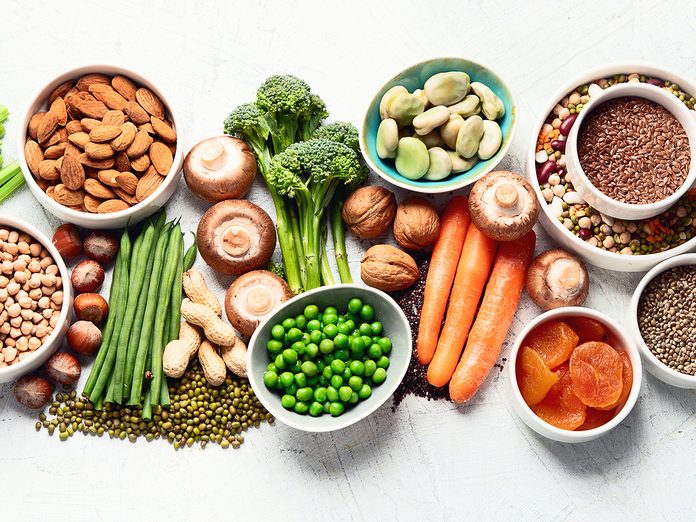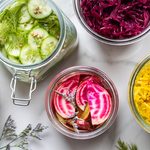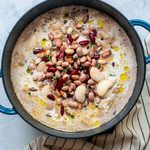What Is Plant-Based Protein and How to Add More to Your Diet

Plant-based protein contains a blend of healthy fats and fibre. Here are 12 great plant sources of protein, plus a one-day sample meal plan to try.
In the past, only vegetarians and vegans cared all that much about plant protein. That’s not the case anymore. In the first four months of 2020, sales of plant-based meat spiked 148 percent over the year before, according to the Plant Based Foods Association.
The plant-based food trend shows no signs of slowing down. By 2027, plant-based protein sales in the United States are projected to rake in 17 million dollars, more than triple today’s revenues, according to a report by Research and Markets.
So, what’s driving the plant-based protein craze and should you be getting more protein from plant sources versus traditional sources of protein, like meat, fish, eggs, and dairy? Here’s everything you need to know about plant-based protein.
What is a plant-based diet?
A whole food plant-based diet focuses on eating foods mainly derived from plants. These include a variety of fruits and veggies, whole grains (oats, brown rice, and quinoa), pulses (beans, lentils, peas, and chickpeas), nuts and seeds, herbs and spices, and occasional animal-based foods.
Those who follow a plant-based diet aren’t necessarily vegan or vegetarian. Rather, they’re opting to add more plant foods to their diets, and eating less processed foods and meat.
How it is different from vegan and vegetarian diets?
There are many similarities between a plant-based diet and a vegetarian or vegan diet. The main difference is that those following a plant-based diet might occasionally eat some animal-based foods. One follower of this diet may opt to eat one non-plant ingredient, such as fish. Another plant-based dieter may choose to occasionally eat meat.
Meanwhile, a vegan diet primarily consists of veggies, fruits, whole grains, pulses, nuts, and seeds (ideally), although any foods free of animal products or ingredients qualifies as vegan. Vegans avoid all animal-sourced foods and ingredients, even honey, gelatin, and collagen. Similar to vegans, those who follow a vegetarian diet will have no meat, poultry, or seafood. But vegetarians, like some plant-based eaters, can consume dairy and eggs. People who follow other forms of vegetarianism may eat fish and seafood.
(Related: 5 Meal Prep Tips for People Who Are Vegans or Vegetarians)
What is plant-based protein, anyway?
Protein does lots of great things for our bodies. In addition to building muscle and keeping us full between meals, protein helps build bones, hormones, antibodies, and more. Some of the best sources of protein include meat, poultry, fish, eggs, and dairy. But plants like beans, soy, nuts, seeds, and even whole grains pack surprising amounts of this nutrient.
Plant protein vs. animal protein
Animal foods offer complete protein. That means they contain all the essential amino acids the body needs to manufacture its own protein supply. Plants, on the other hand, often contain incomplete protein, which lacks one or more essential amino acids. There are exceptions, though. Both soy and quinoa are complete proteins.
For years, nutrition experts believed the only way to obtain enough essential amino acids from a plant-based diet was to combine plant proteins at meals, like eating rice with beans. In doing that, the theory went, you’d get certain amino acids from the rice and other amino acids from the beans.
Now, the thinking has changed. “Our bodies are quite sophisticated, and we now know that as long as we eat a variety of foods throughout the day, we can get the right proportions of amino acids from plants,” says dietitian Vandana R. Sheth, RDN, author of My Indian Table: Quick & Tasty Vegetarian Recipes.
Can you really get enough protein from plants?
Yes, but it might take a little extra work. “Lean meat, low-fat dairy, and eggs have a higher protein density, making an omnivorous diet ideal when targeting protein needs,” says Heather J. Leidy, an associate professor of pediatrics at the University of Texas at Austin and member of the 2020 Dietary Guidelines Advisory Committee. “It’s extremely difficult to meet the dietary reference intakes for protein when eating plant-based protein only with no supplements.”
That doesn’t mean it can’t be done. The key to getting enough protein when following a plant-based diet is to eat a wide variety of protein-rich foods. “While meat may be a more concentrated source of protein, it doesn’t mean there aren’t plant-based foods that are also protein rich,” says Angela Wortley, RDN, a nutritionist and certified intuitive eating counselor in Ann Arbor, Michigan. “The word is slowly spreading that foods such as tofu, lentils, and seitan are also great sources of protein and consuming them has health benefits.”
What makes plant-based protein so healthy?
“The biggest benefit of whole, plant-based protein is that it’s coupled with a blend of healthy fats and fibre,” says Wesley McWhorter, RDN, a spokesperson for the Academy of Nutrition and Dietetics. At the same time, it’s low in saturated fat and has zero cholesterol. This type of eating pattern has been linked to a lower risk of heart disease, type 2 diabetes, dementia, overweight, and obesity.
It’s so powerful that a 2020 meta-analysis of 32 studies in the British Medical Journal found that for every additional 3 percent of calories a person consumed from plant protein, their risk of early death decreased by 5 percent. Compare that to animal protein. Depending on the food, it can be high in saturated fat. And it’s been linked to high cholesterol and heart disease.
Of course, just because a food is rich in plant protein doesn’t automatically mean it’s better for you. “There are also plenty of processed plant-based foods that lack fibre and contain excessive sugar, sodium, and unhealthy fats,” says McWhorter. That’s why it’s extra important to read the nutrition label and ingredient list and to stick with minimally processed sources whenever possible.
(Related: How Does This Trendy Plant-Based Egg Compare to the Real Thing?)
Risks and side effects of plant-based protein
Fibre-rich plant proteins like beans and lentils can do great things for your health. But they can also cause gas and bloating, especially if you’re not used to eating them on a regular basis, explains Sheth. Ditto for plant-based meats that are often made with pea protein.
The good news is you can still eat them. The trick is to add them to your diet slowly to give your digestive system time to adjust, she advises. However, if you’re allergic to soy or nuts, you’ll definitely want to avoid these foods.
What are the best sources of plant protein?
If you’d like to add more plant-based protein to your diet but aren’t sure where to start, try these foods:
- Soy milk: Soy’s complete protein makes soy milk a great plant-based alternative to cow’s milk. For comparable nutrition, look for brands fortified with calcium and vitamin D (and vitamin B12, if you’re a vegan).
- Quinoa: This high-fibre grain (it has 5 grams per cooked cup) also has a low glycemic index, making it a win for blood sugar control. Plus, it contains all the essential amino acids your body needs.
- Tofu: Made from solidified soy milk, tofu is perfect for smoothies, stir fries, and sandwiches. Some brands offer as much calcium as a glass of cow’s milk, so check out the nutrition label.
- Tempeh: This fermented soybean cake is packed with iron, and it’s a good source of zinc. Use it for veggie burgers, or crumble it into tacos or pasta sauce.
- Seitan: Made from wheat gluten, seitan’s meaty texture makes it a smart replacement for meat (unless, of course, you have celiac disease or a gluten intolerance). Try it pan fried or grilled.
- Sorghum: In addition to protein, you’ll net iron, magnesium, and B vitamins from this grain. Serve it as a side dish or pop it like popcorn for a snack.
- Amaranth: This gluten-free grain is also full of inflammation-fighting antioxidants. Try it as a higher-protein alternative to oatmeal.
- Pulses: Along with plenty of protein (roughly 15 grams per cup), these little guys are loaded with soluble fibre and potassium for heart health.
- Bean-based pasta: Whether it’s made from chickpeas, lentils, edamame, or black beans, these noodles are a genius way to give your pasta bowl a protein boost.
- Sprouted grain bread: Made from a mix of beans and high-protein grains, each slice packs 5 grams of plant protein and 3 grams of fibre.
- Nuts: Thanks to a trifecta of plant protein, fibre, and healthy fats, nuts are practically guaranteed to keep you full between meals.
- Plant-based protein powder: If you’re finding it difficult to get enough protein from plants, “either soy or pea protein isolates are a great way to meet protein needs,” says Leidy.
Next: 6 High-Protein Plant-Based Meals This Nutritionist Loves




